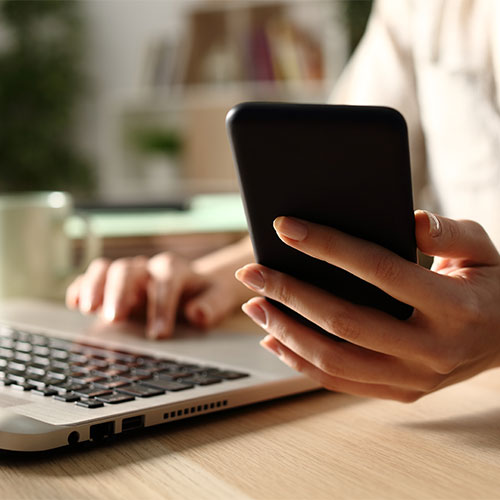This is an archived article and the information in the story may be outdated. Please check the time stamp on the story to see when it was updated last.
There are a number of important settings that you can enable in your iPhone to protect your privacy, but the first step is learning which are most important and worth your time and consideration. Several tech experts confirmed that there is one setting that you need to turn on ASAP to protect your privacy — here’s everything you need to know about the setting, why it’s so crucial, and how to enable it so that your device is as secure as possible.


Enable two-factor authentication
There’s no question about it — most tech experts who spoke with SHEFInds.com cited two-factor authentication as one of the most important settings that adds an extra security layer to your iPhone. Two-factor authentication, or 2FA for short, requires that you provide two pieces of information when you sign onto a device: your password and a six-digit verification code that is either sent to your phone or computer.
“It prevents hackers from gaining access to your Apple account even if they knew your password,” says Tech Expert Aamir Irshad at PC Builderz. “For this, they must have access to your phone, as this is where you’ll receive the verification code.”

Although it may seem like an inconvenience, experts say 2FA is well worth the added step since it has become even easier for hackers to crack passwords. And new software updates are making it even simpler to use.
“There's an update about this where security code autofill is already built-in without the need to enable 2FA on your settings,” says Tech Expert Tim Robertson Founder of inVPN.com. “It automatically routed to the code field on the app or website you are trying to log into. However, there are apps and websites that still require 2FA to be enabled so I suggest you do it. This will prevent hackers from accessing your details, most especially if you have put details in your social media accounts and the like.”

To set up two-factor authentication on your iPhone, iPad, or iTouch, go to Settings [Your Name] > Password & Security > Tap Turn on Two-Factor Authentication. Tap Continue, enter the phone number where you want to receive verification codes, and tap Next. Enter the verification code to verify your phone number and turn on Two-Factor Authentication.

And while we’re on the subject of passwords, even after you install Two-Factor Authentication, remember to create a longer, more complex password each time you log onto a new site or app.
“There are many tools out there that can crack easy to suggest passwords on iPhones,” Irshad says. “Most of the time, law enforcement agencies use these tools, but some hackers can also use them to gain access to your Phone. So make sure to create a strong password with a mix of small/capital letters and numbers.”


























